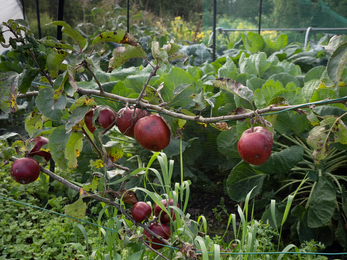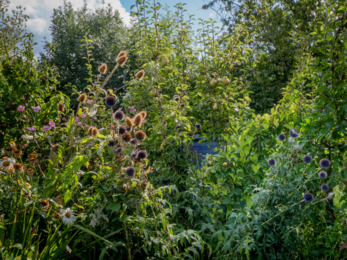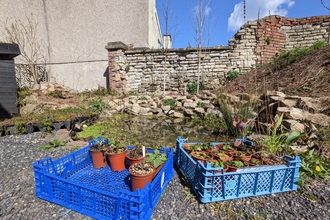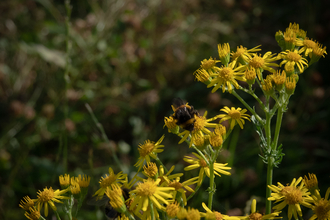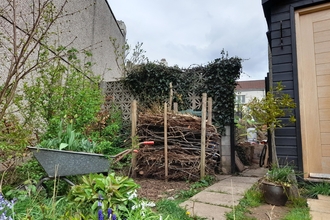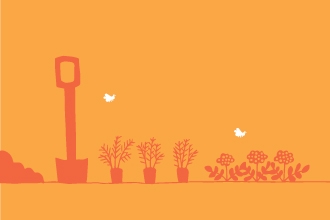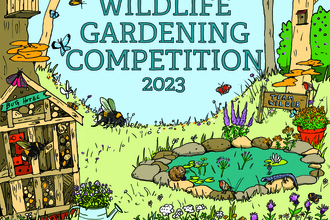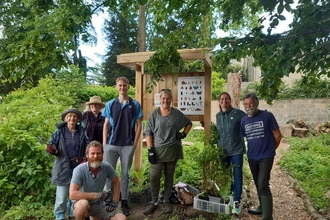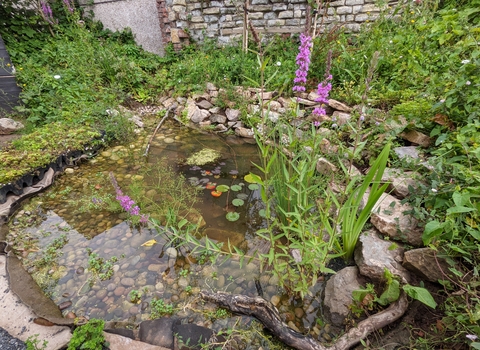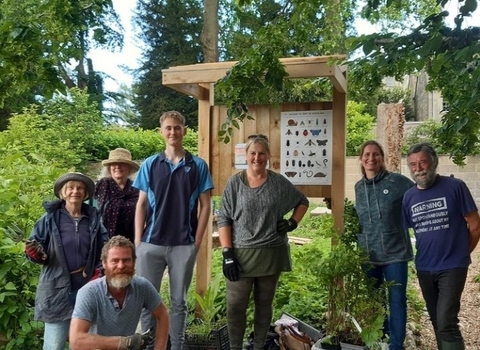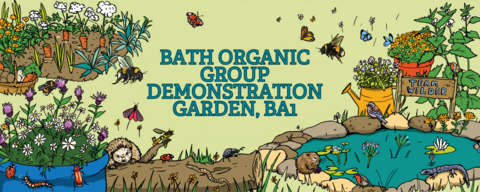
Hannah Bunn
Food Growing: Bath Organic Group Garden
Name: Bath Organic Group
Category: Food Growing in the wildlife gardening competition 2023
Area: Bath, BA1
What makes your garden wildlife friendly?
We have made it a rich haven for wildlife, just a short walk from the city centre. Much of the site is orchard or grass borders, which are scythed or managed to achieve a balance between good habits for wildlife, but also accessible for our members and visitors, including some with limited mobility and therefore needing safe level paths. When we need to till the soil we try to do so respectfully to maintain the soil and surface biodiversity to the maximum we can.
Tell us what you love about your garden
In 1990 a small group of locals who had formed Bath Organic Group were able to rent from the Council a group of allotment plots on the Lower Common West site, alongside the Upper Bristol Road. Now extending to the equivalent of 21 allotment plots, our site is managed as a garden and orchard that demonstrate organic and wildlife friendly growing. Over 30+ years members have come and gone (though we still have a small number of the 1990 group), but there has always been a willing team of volunteers to make this a friendly and welcoming place. We have people with real expertise, and others who have joined because they want to learn crop growing from the basics. It means we are a band of people who are variously motivated by being sociable, being active, learning loads, or simply taking our share of the crops. And beyond that, we can hold events at the garden, and encourage people to think about the soil and about the food they put on their plates. Caring for our wildlife has been integral for those 33 years.

Stephanie Chadwick
What wildlife have you seen in your garden?
It is impossible to list every species! Here's an overview:
- We do everything possible to encourage pollinators, with wildflower planting alongside the productive areas, and attention to year round food supplies for pollinators.
- We created a small pond, and then extended it about a decade ago. It has attracted a range inhabitants.
- We care deeply about soil, and the myriad types of creatures and fungi that do more than 'live' in the soil. We've become excited about the developing research into the rhizosphere, so we use a low-dig method of gardening, and ensure we do everything possible to encourage the soil inhabitants. Those microbes feed our plants, and our plants feed them - a wonderful symbiosis. And we know they are uncountable - hundreds of species, and many thousands of individuals of some species.
- We do also have our fair share of slugs and snails, but try to manage them more through healthy crops than by attacking them.
- Our friendly and our bothersome inhabitants include all different shapes and colours of the following: caterpillars, moths, butterflies, ladybirds, beetles, spiders, centipedes, bees, and many birds.
- And, not surprisingly, we've clear signs of rats, and we think it is a badger that occasionally rips into our polytunnels to enjoy the warm moist soil (and worms) inside.
Bath Organic Group won!
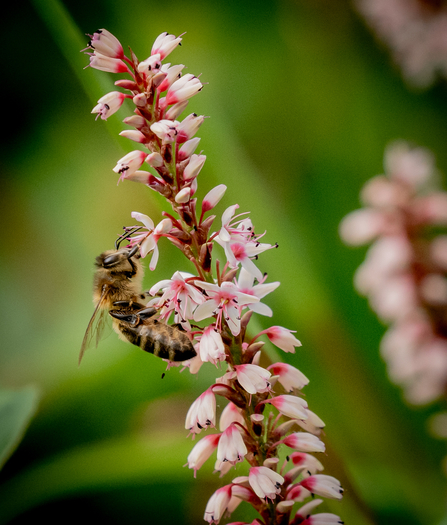
Stephanie Chadwick
We love to have wildlife areas wherever possible to encourage beneficial insects, to be close to the crops that need to be pollinated. We have four crop rotation beds, with perennial flower areas between them. This also encourages predators, for pest control, allowing us to be fully organically.
One of our strongest wildlife areas is our soil, which is full of beneficial insects and microorganisms. We recommend using manure and compost, growing diverse crops together and rotating crops each year. Also avoid digging when it's too hot, to not dry out this crucial habitat.Bath Organic Group
Feeling inspired?
Advice from the Team Wilder Community Ecologist
Pond management Plants will need to be cleared from the pond in the autumn (October/November) and a third of the vegetation should be taken out. It is best practise to take only a third out of a pond each year, for minimal habitat disturbance so there is still shelter for wildlife. Tree branches overlapping the pond should be cleared as leaves increase the nutrients levels of the pond.
Team Wilder Ponds
Marginal plants Recommended species include teasel, common knapweed, water avens, yellow iris, red campion, corky-fruited water-dropwort and ragged robin. Other marginal species are suitable include purple loosestrife, water forget-me-not, marsh marigold, water speedwell and water mint. You might also want to add some oxygenating plants to the pond and this includes species such as water crowfoot, milfoil, or hornwort. Please ensure that the plants that you introduce are from local, reputable suppliers, such as Grow Wilder.
The conifer trees The conifer trees along the southern boundary block light and are also less valuable for wildlife than deciduous trees would be. The felling of these trees will allow more light to reach the understorey of the different habitats, including the orchard, and therefore increase the site’s value for biodiversity. A native hedgerow could be grown to replace these conifer trees if possible.
- Native hedgerow species, such as hawthorn, hazel, field maple, hornbeam, dogwood, guelder rose or holly, could be planted along the south boundary.
- Hedgerow species can be purchased from the suppliers below, either individually or as a pack.
- There is a useful guide here that details how to create a hedgerow and what the process involves.
- A wildflower mix for hedgerows can be sown alongside the hedgerow to add diversity or the grass can be let to grow long.
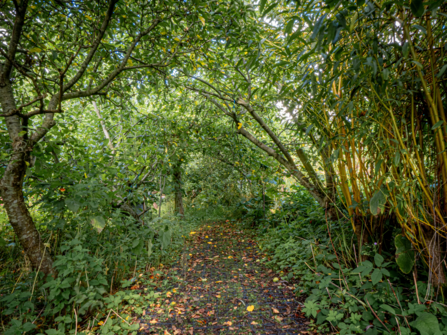
Stephanie Chadwick
Resources

(C) Hannah Bunn
Be part of Team Wilder
Feeling inspired by this wildlife garden? Try something for yourself at home, in your community, school, business or land, no matter the size.
All actions for nature collectively add up and makes a difference for people and wildlife.
Share your actions for nature, like bath Organic Group, and motivate others to do the same.
Log your actions for nature on the map



